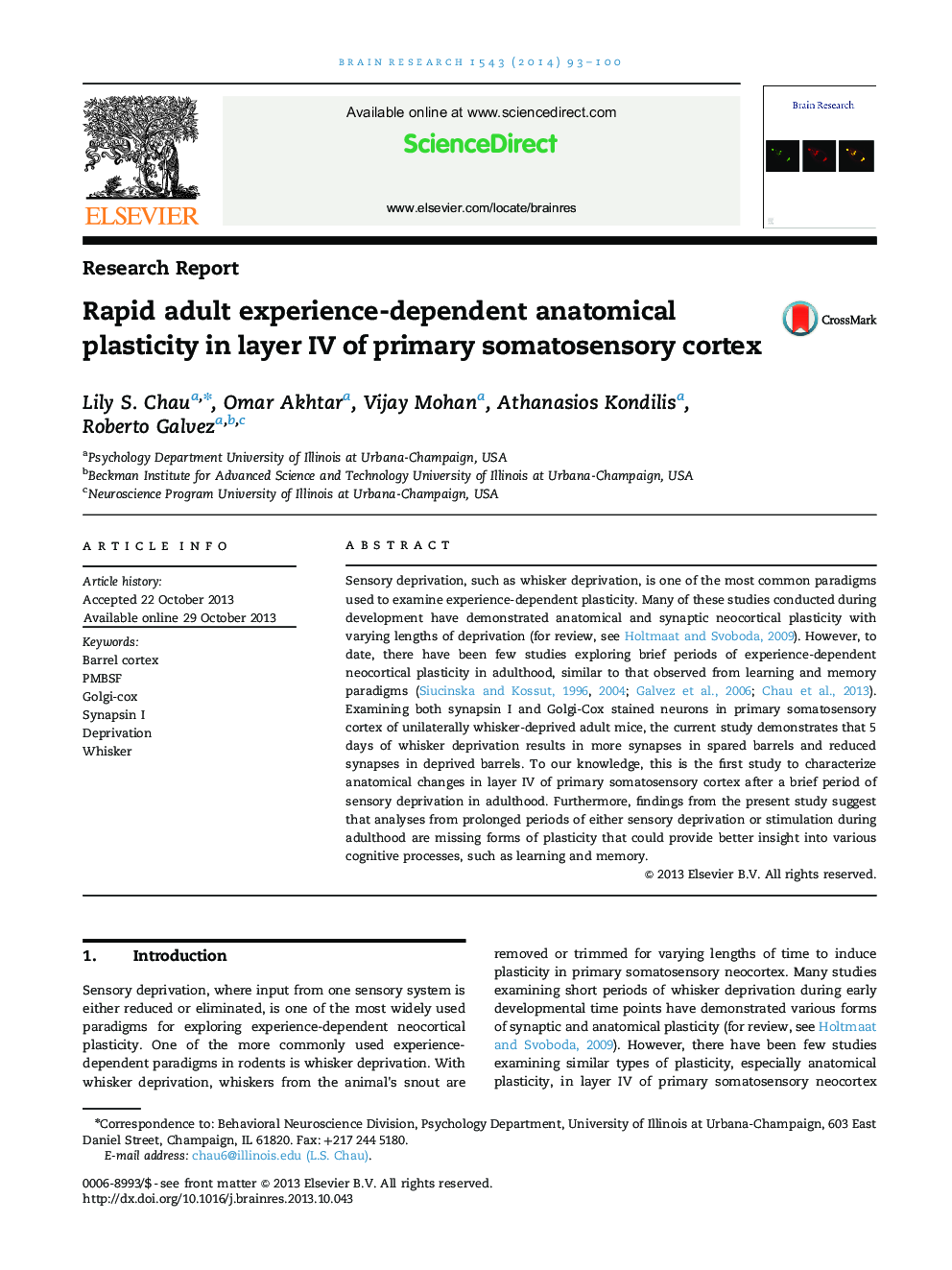| Article ID | Journal | Published Year | Pages | File Type |
|---|---|---|---|---|
| 6263435 | Brain Research | 2014 | 8 Pages |
â¢Adult whisker deprivation induces rapid neocortical anatomical plasticity.â¢Adult whisker deprivation increases cortical spine density for spared barrels.â¢Adult whisker deprivation decreases cortical spine density for deprived barrels.
Sensory deprivation, such as whisker deprivation, is one of the most common paradigms used to examine experience-dependent plasticity. Many of these studies conducted during development have demonstrated anatomical and synaptic neocortical plasticity with varying lengths of deprivation (for review, see Holtmaat and Svoboda, 2009). However, to date, there have been few studies exploring brief periods of experience-dependent neocortical plasticity in adulthood, similar to that observed from learning and memory paradigms (Siucinska and Kossut, 1996, 2004; Galvez et al., 2006; Chau et al., 2013). Examining both synapsin I and Golgi-Cox stained neurons in primary somatosensory cortex of unilaterally whisker-deprived adult mice, the current study demonstrates that 5 days of whisker deprivation results in more synapses in spared barrels and reduced synapses in deprived barrels. To our knowledge, this is the first study to characterize anatomical changes in layer IV of primary somatosensory cortex after a brief period of sensory deprivation in adulthood. Furthermore, findings from the present study suggest that analyses from prolonged periods of either sensory deprivation or stimulation during adulthood are missing forms of plasticity that could provide better insight into various cognitive processes, such as learning and memory.
